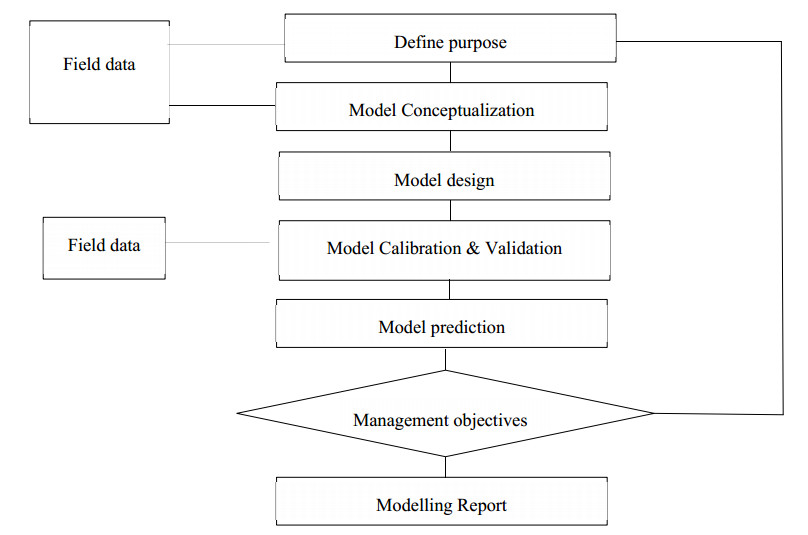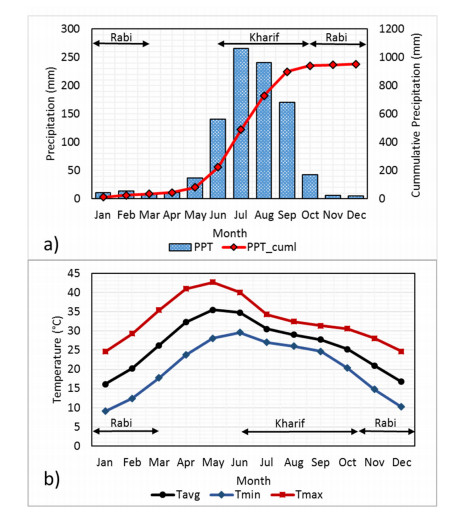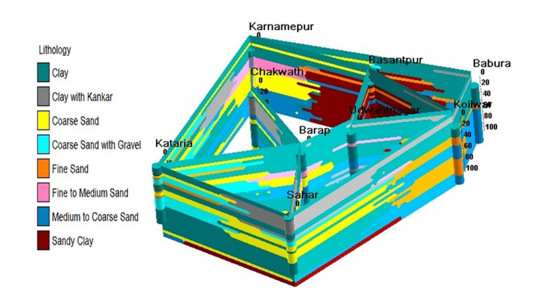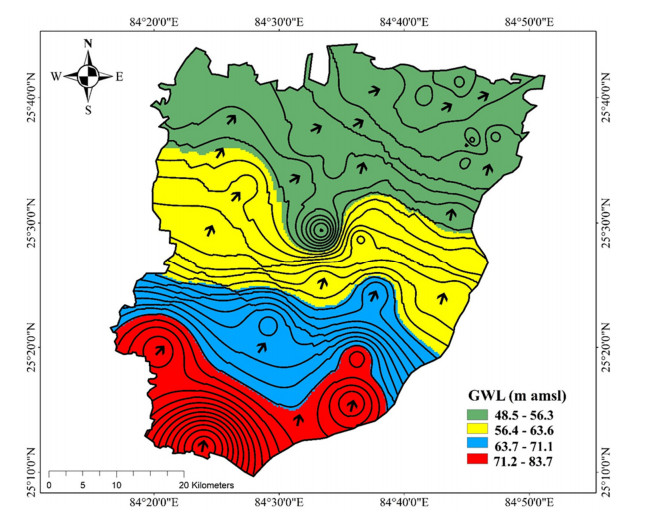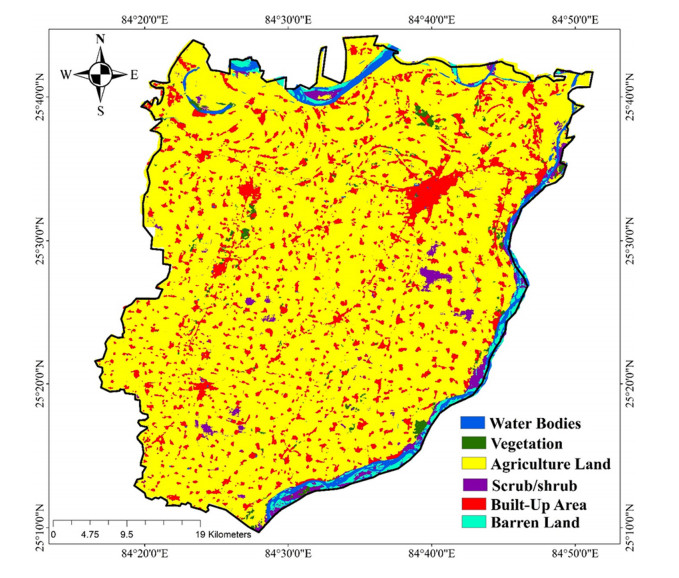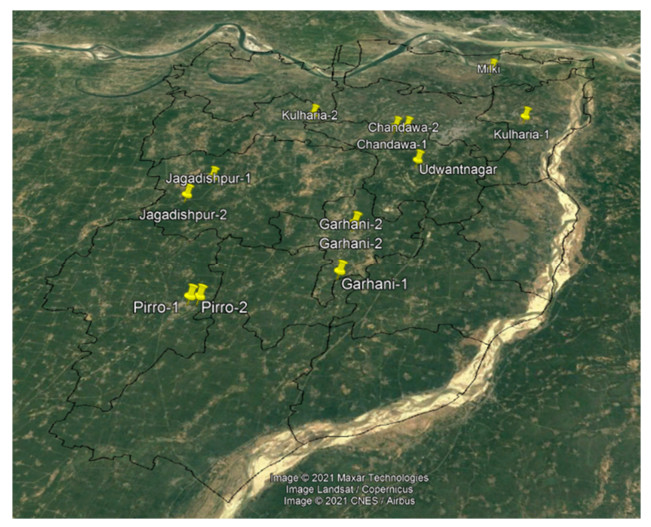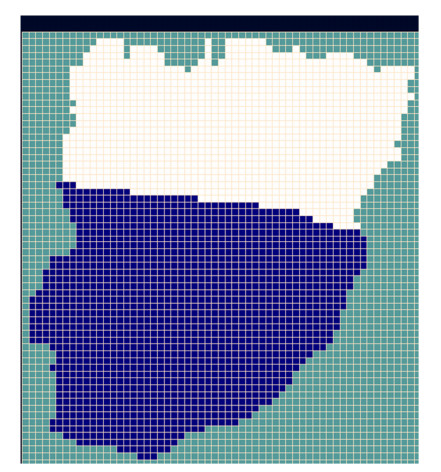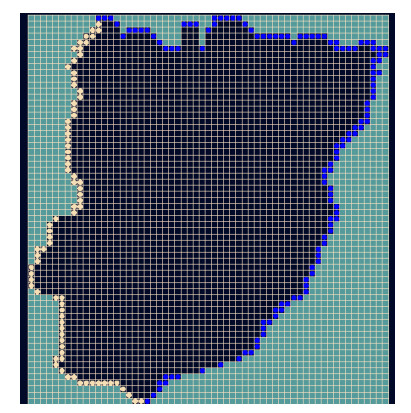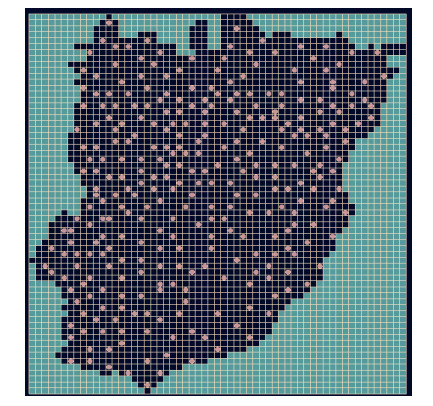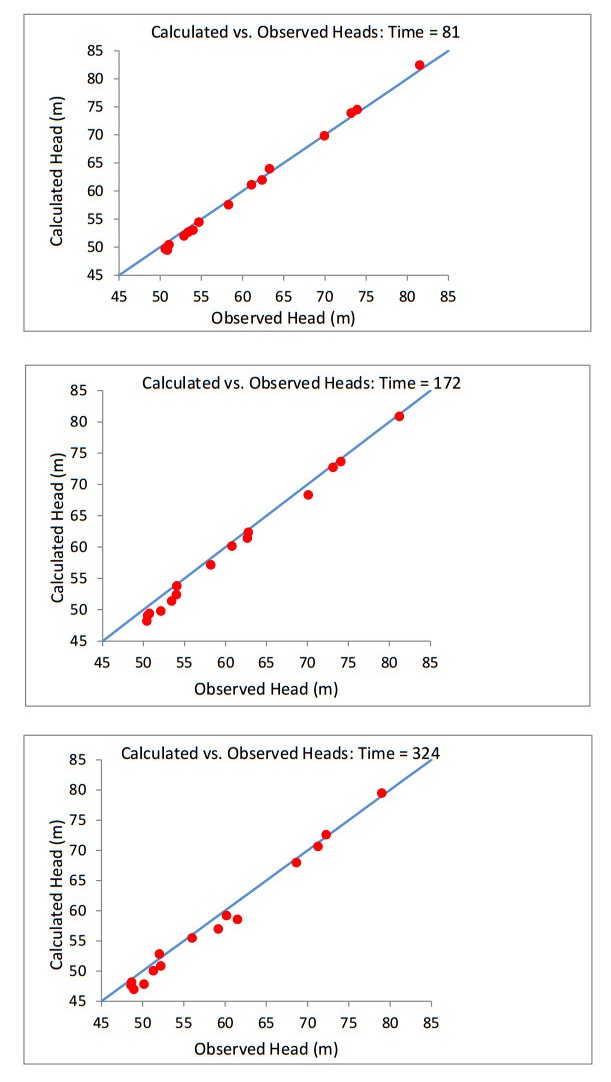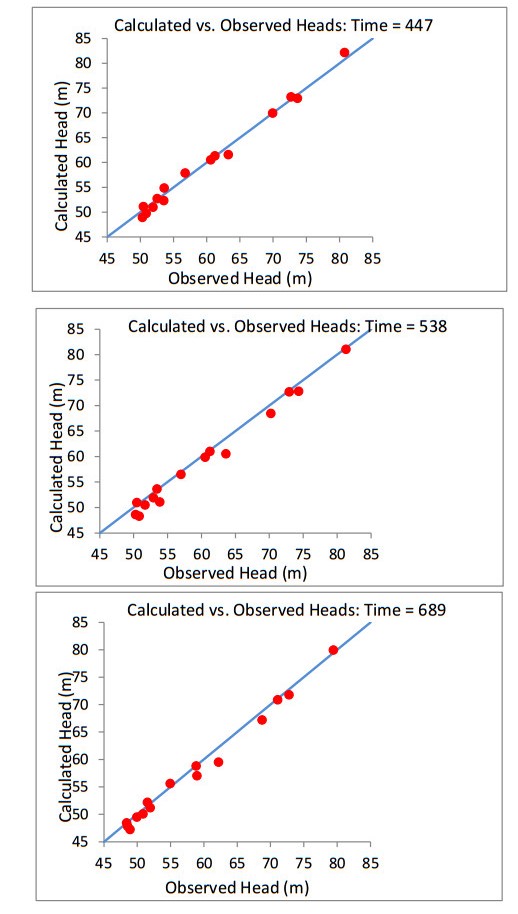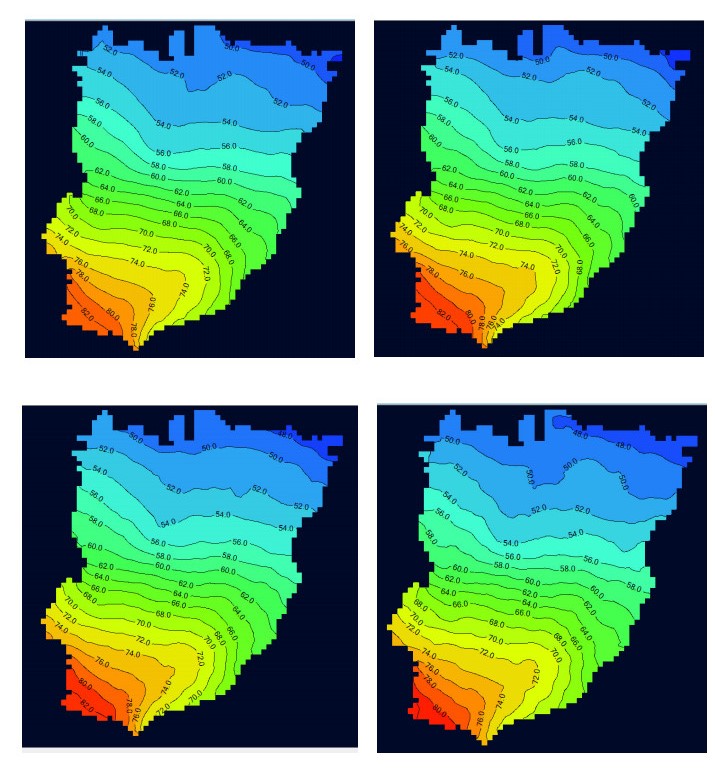1.
Introduction
The investigation of surfaces and alternative frames in Lorentz–Minkowski space offers insights into the interplay between differential geometry and special relativity [1,2,3,4].
Ruled surfaces are surfaces that can be generated by moving a straight line in space according to specific rules. These surfaces have applications in various fields, including architecture, computer graphics, and differential geometry itself. While ruled surfaces are often studied in Euclidean or Riemannian geometries, examining them in the context of E31 opens new perspectives and challenges due to the Lorentzian nature of spacetime. The use of alternative frames in differential geometry [5,6] provides a basis for understanding the geometric and physical properties of spacetime. This approach, extensively discussed in Wald's textbook [7], allows for the decomposition of the metric tensor into components corresponding to different types of vectors in the frame. Alternative frames have proven valuable in studying the kinematics of particles and observers in curved spacetimes, enabling the interpretation of relativistic effects and gravitational interactions. Furthermore, in the fields of partial differential equations, geometric analysis, mathematical physics, etc., soliton theory is a critical theory that attracts the attention of many researchers [8,9,10,11]. There are many applications of solitons in applied mathematics and pure mathematics, especially in partial differential equations, ordinary partial differential equations, Lie algebras, Lie groups, differential geometry, and algebraic geometry [12,13,14,15]. In [16], Manukure and Booker presented an overview of solitons and applications; they stated the research history of solitons and showed further developments. The paper [16] shows that solitons appear in various fields, particularly in physical contexts, including fluid dynamics, optical fibers, and quantum field theory. In each case, they are described by specific evolution equations that capture the relevant physics [17]. This work aims to explore the evolution of different types of timelike ruled surfaces using alternative frames in Minkowski space. By investigating the interplay between these surfaces and alternative frames, we enhance our understanding of the geometric structures of these surfaces in Lorentz-Minkowski 3-space.
This paper is organized as follows: In Section 2, we provide a brief overview of curves and timelike ruled surfaces and explore the relationship between these surfaces and alternative frames in Lorentz–Minkowski 3-space. Section 3 presents evolution equations for a given timelike curve and some timelike ruled surfaces generated by the alternative frame vectors of their associated timelike curves in Lorentz–Minkowski 3-space. Illustrated examples to support our main results are provided in Section 4, and we conclude with a summary of our findings in Section 5.
2.
Geometric concepts
2.1. An alternative frame
Lorentz–Minkowski 3-space E31 is the real vector space E3 augmented by the Lorentzian inner product
where a=(a1,a2,a3) and b=(b1,b2,b3)∈E31. The norm of b is ‖b‖=√⟨b,b⟩E31.
The cross product of a and b is given by
If r(s):I⊆R⟶E31 is a regular curve described by
where I is an open interval and y(s),z(s), and w(s)∈C3, then r is spacelike if ⟨r′(s),r′(s)⟩E31>0, timelike if ⟨r′(s),r′(s)⟩E31<0, and lightlike if ⟨r′(s),r′(s)⟩E31=0, for all s∈I.
The derivatives of the Frenet frame vectors of r(s), which has tangent T(s), principal normal n(s), and binormal p(s), take the form:
where
and
The functions κ(s) and τ(s) represent the curvature and the torsion of the curve, respectively. For more details, see [2]. Additionally, this frame satisfies the following conditions:
where Ts(s)=dT(s)/ds.
In this context, the time evolution equations for the given curve are written as follows:
where α, β, and γ are the velocities of the curve, dependent on its curvatures.
Next, we explore the alternative frame of r(s) as a timelike curve in Lorentz–Minkowski 3-space. By examining this frame, we gain insights into the geometric properties and physical aspects of the curve, offering a fresh perspective on its behavior within the context of differential geometry.
Consider r=r(s) as a given timelike curve with arc length parameter s in E31. Let {T(s),n(s),p(s)} and {n(s),C(s),W(s)} be the Frenet frame and the alternative frame of r, respectively. The alternative frame can then be defined as follows:
where n, C, and W represent the spacelike normal, the timelike derivative of the normal, and the spacelike Darboux vector of r(s), respectively [5]. Clearly, the Darboux vector W is orthogonal to the normal vector n(s) [6,18].
The derivative formulas for the alternative frame of r(s) can be expressed as follows:
where
are differentiable functions referred to as alternative curvatures that depend on the curvatures of r(s).
Since the principal normal vector n(s) is common to both frames, the relationship between the two frames can be expressed in matrix form as [5]:
or
Considering that
and to simplify the form of our equations, we will use the following symbols:
The equations of motion for the alternative frame {n(s),C(s),W(s)} of r(s) can be expressed broadly, similar to Eq (2.8) as [19]:
where δ, θ, and ϕ represent the alternative velocities of the aforementioned curve.
The alternative frame provides a distinct basis for analyzing the geometry of curves and surfaces. The vectors in this alternative frame often offer insights into various geometric properties and can simplify the analysis of complex structures [20]. In [21], a novel class of ruled surface known as the C-ruled surface is introduced, defined through the alternative frame associated with a base curve. The differential geometric properties of this surface are examined, including the striction line, distribution parameter, fundamental forms, as well as Gaussian and mean curvatures. In our work, we will examine the evolution equations for specific types of ruled surfaces with significant geometric applications. By employing the alternative frame associated with the basic curve of these surfaces, we will investigate their key geometric properties. This comprehensive analysis will provide deeper insights into the dynamics of the local curvatures during their evolution. Our work aims to advance the understanding of surface behavior in Lorentz–Minkowski 3-space, with implications across various disciplines.
2.2. Ruled surfaces in Minkowski space
A ruled surface is one generated by moving a straight line, known as the ruling line, according to specific rules. Each ruling line lies entirely on the surface, forming a family of lines that cover the surface. Mathematically, a ruled surface can be defined as follows (see [3,22,23,24] for more details):
where r(s) is the base curve of S(s,v) in Lorentz–Minkowski 3-space, v is a function defined on an interval J, and Φ is a fixed vector representing the direction of the ruling lines. The choice of the curve r(s) and the function v determines the specific properties and shape of the ruled surface.
Definition 2.1. A surface in Lorentz–Minkowski 3-space is classified as spacelike or timelike based on the nature of the induced metric at the surface: a positive definite Riemannian metric corresponds to a spacelike surface, while a negative definite Riemannian metric corresponds to a timelike surface. Alternatively, a spacelike surface has a normal vector that is timelike, whereas a timelike surface has a normal vector that is spacelike[25].
For the ruled surface defined by Eq (2.14), the normal vector at a point is defined as a vector perpendicular to the tangent plane of the surface at that point. This normal vector is crucial for defining the geometry of the surface and is denoted by
The first and second fundamental forms on the surface S, along with their quantities, are respectively expressed by
where,
and
noting that
The Gaussian and mean curvatures of S play a vital role in characterizing the shape and properties of S. They are given by the following forms:
and
where Δ=EG−F2, h=eg−f2, and h∗ denotes the inverse matrix of h [25].
It is worth noting that, as stated in [26], the surface evolution denoted by S(s,v,t) and its corresponding flow ∂S(s,v,t)∂t are considered inextensible if the following condition is satisfied:
3.
Evolution equations and alternative frame
In this section, we focus on deriving the evolution equations for special types of ruled surfaces using an alternative frame for their curves. To achieve this, we first derive the evolution equations for a timelike curve, highlighting its unique geometric properties and implications within differential geometry. The main result of this analysis is presented in the following theorem.
Theorem 3.1. Let r=r(s,t) be a given timelike curve which has the alternative frame {n,C,W} in E31, then the evolution equations of the alternative curvatures of r can be described as:
where δ, ϕ and θ are the velocities of r.
Proof. Let us write Eq (2.8) in a simple form as
where
Similar to that procedure, Eq (2.13) can be reformulated as
where
From this point, by applying the compatibility conditions ∂∂s∂A∂t=∂∂t∂A∂s and making some calculations, one can obtain
with Lie bracket [L,M]=LM−ML.
We conclude from Eq (3.4), after simple calculations, we obtain the following system of equations
which leads to the completeness of the proof.
□
Our focus now shifts to deriving evolution equations for specific ruled surfaces generated by the alternative frame vectors associated with their curves. This will be addressed through the following theorems.
Theorem 3.2. Consider r=r(s,t) is a timelike curve that has the alternative frame {n,C,W} in Lorentz–Minkowski 3-space. Let Sn be a timelike n-ruled surface whose r is its base curve, then the following are hold:
1) The evolution equation of Sn is
2) Sn is minimal surface if and only if
3) Sn is developable if and only if
Proof. Since, the ruled surface Sn can be written as:
then by differentiating this equation, we get
From Eq (2.15), the normal on N is obtained:
In the light of the above, the first fundamental quantities are
which lead to
The second derivatives of Eq (3.6) with respect to s and v are expressed as
From this, the second fundamental form is given as follows:
where,
From the aforementioned data, the Gaussian and mean curvatures for the surface Sn are given as follows:
therefore, the surface Sn is minimal if and only if
On the other hand, the surface Sn can be described as a developable if and only if
In light of the benefit of Eq (2.20), the evolution of the surface is obtained:
This finishes the proof. □
Theorem 3.3. Assume that SC is a timelike C-ruled surface and r(s,t) be its timelike curve, which has the alternative frame vectors n,C,W in Lorentz–Minkowski 3-space. The surface SC satisfies the following:
1) It is minimal if and only if
holds.
2) The surface is developable if and only if
is hold.
3) It has the evolution equation:
Proof. The parametric representation of the SC surface can be formulated as
The partial differentials of the surface SC with respect to s and v are given from
Again, the surface differentials with respect to the parameters s and v are expressed as follows:
From this, the normal relative to the surface is given by
In light of the above-mentioned data related to surface calculations, the first and second fundamental forms with their quantities are, respectively
which give us
and,
From this, we have
The geometric meanings of the surface SC are represented by its Gaussian and mean curvatures. They are given from
As a result of the above, the surface SC is minimal when
holds.
Besides, the surface SC is classified as a developable whenever
is hold.
By applying Eq (2.20), the evolution condition for this surface is expressed as
Hence, the proof is completed. □
Theorem 3.4. Suppose that SW is a timelike W-ruled surface generated by the alternative vector W of its base curve r in Lorentz–Minkowski 3-space. Then, the following statements are satisfied:
1) SW is a developable surface.
2) It has the following evolution equation:
Proof. Since the surface SW has the following parametric representation
then by differentiating this equation twice with respect to s and v, we obtain the following
From this, we have the normal
and
and also
Further, the Gaussian and mean curvatures of SW are calculated as
As a consequence, this surface is developable and not minimal.
Under the previous data, the evolution equation for the surface SW is given by
Thus, the result is clear. □
4.
Application
In this section, we are interested in providing a practical example to demonstrate the theoretical results that we obtained through our study of the three special ruled surfaces: n-ruled, C-ruled, and W-ruled surfaces.
Consider r(s,t) be a timelike curve given by (see Figure 1)
The tangent T, the normal n and the binormal p of r are, respectively
The curvature functions of the considered curve are
also, the alternative frame vectors n,C,W of r are given as follows:
From this, the alternative curvatures of r are calculated as
The n-ruled surface that has r as a base curve is expressed by the following representation (see Figure 2)
which has the normal
The first and second fundamental coefficients of the surface can be calculated, respectively
and
Also, the surface's curvatures are
Similarly, the ruled surface that is generated by the vector C of the alternative frame of r can be written as (see Figure 3)
Straightforward calculations of the surface SC lead to
and
The Gaussian and mean curvatures of SC are
In the light of these results, this surface is neither developable nor minimal.
Likewise, the parametric representation for the ruled surface SW reads as (see Figure 4)
Making some special calculations related to the considered surface, we get
and
The Gaussian and mean curvatures are
which describe SC as developable and not minimal.
5.
Conclusions
In the three-dimensional Lorentz–Minkowski 3-space E31, we examined the evolution equations for specific types of ruled surfaces that have significant geometric and physical applications. We employed the alternative frame associated with the basic curve of these surfaces and investigated their key geometric properties. Through a comprehensive analysis, we gained deeper insights into the dynamics of the local curvatures exhibited by these surfaces during their evolution. This work advanced the understanding of the dynamical behavior of surfaces in Lorentz–Minkowski 3-space, with potential implications across various disciplines. Finally, we discussed applications of our preliminary findings, which contribute significantly to the broader field of differential geometry. Looking forward, several avenues for future research emerge. Our findings could be applied to physical models involving particle trajectories or gravitational fields, potentially revealing how timelike ruled surfaces might be utilized in practical scenarios or theoretical frameworks. Further studies could explore alternative frames in more complex settings or for other types of surfaces beyond ruled ones, which might lead to a broader understanding of geometric structures in relativity. The study of solitons through their evolution equations provides crucial insights into a wide range of phenomena, contributing to advances in both theoretical and applied sciences. Solitons are special types of solutions to nonlinear partial differential equations that maintain their shape while propagating at constant velocity. They are often associated with topological solutions and are significant in various fields [16]. Here are some potential applications of evolution equations related to solitons (topological solutions): In the field of mathematical physics, the study of solitons is essential for understanding integrable systems, where the evolution equations are exactly solvable. This has applications in theoretical models and helps in the development of new mathematical techniques. Also, in plasma physics, the evolution equations used in solitons can describe stable wave packets in plasma, which helps in understanding space weather–phenomena and the behavior of high-energy plasmas. By expanding on these aspects, in future research, we will combine the results and methods in [25,26,27] to deepen our knowledge and uncover new applications of differential geometry in both theoretical and practical contexts.
Author contributions
Yanlin Li: Conceptualization, Methodology; M. Khalifa Saad: Validation, Formal analysis; H. S. Abdel-Aziz: Writing-review, Supervision, Validation; H. M. Serry: Methodology, Writing-original draft; F. M. El-Adawy: Validation, editing. All authors have read and approved the final version of the manuscript for publication.
Use of AI tools declaration
The authors declare they have not used Artificial Intelligence (AI) tools in the creation of this article.
Acknowledgments
The authors express gratitude to the reviewers and editors for their helpful comments and suggestions.
Conflict of interest
All authors declare no conflicts of interest in this paper.
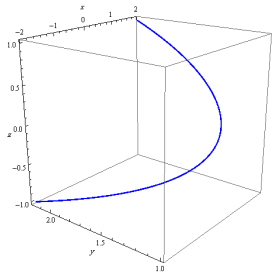









 DownLoad:
DownLoad:






